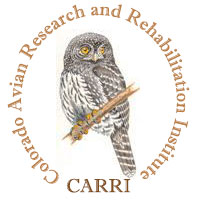Barn Owl Partnership
Barn Owl Research
In Northern Colorado, we have placed live cameras in several of our Barn Owl nest boxes. Between 2014 and 2020, the Barn Owls in our boxes raised over 150 baby Barn Owls. It has been said that a Barn Owl clutch is between 4 and 6 eggs. Some of our birds follow that protocol, yet others often lay up to 10 eggs. In 2017, we have one nest that has 8 eggs and another that has only 2. The number of eggs that the female lays has a direct correlation to the amount of food the male brings her prior to egg-laying.
Barn Owls in Colorado prefer voles of various species, but also feed upon other small mammals including rats, mice, gophers, and rabbits. We have also found a variety of small birds in the nests, including Red-winged Blackbirds, Western Meadowlarks, Barn Swallows, European Starlings and, American Kestrels, The first two years (2014-2015), the Barn Owls in our boxes did not bring any rabbits into their nests. However, since 2017; bringing rabbits to the awaiting females has become commonplace.
When we began this project, we built nest boxes that were 15 inches (38.10 cm) high, 15 inches (38.10 cm) deep, and 30 inches (76.20 cm) long. Each box had a 6 inch (15.24 cm), inch entrance hole. This size box proved to be too small, as some of the younger owlets perished due to the boxes being too small. Now our boxes are 18 inches (45.72 cm) high, 15 inches (38.10 cm) deep, and 40 inches (101.60 cm) long. With this larger box, the owls are more comfortable and so far we have not lost any young owls because the box was too small.
When placing our boxes we look for areas with specific habitat requirements.
In order for a pair of birds to use one of our boxes, each box is placed in an area that has large un-plowed grass-covered fields, tall trees, or juniper bushes where the male can roost during the day, and each box is placed far from busy roads and highways, so the birds don't get hit by cars while they are hunting. Our boxes are placed on buildings, to lessen the chances of predators such as raccoons entering the nests to disturb the eggs and young. In many of our locations, the birds raise two broods per season and often raise more than 10 owlets per season.
Below are some photos of the Barn Owl research.
Barn Owl numbers have declined over the years due to manmade causes, such as loss of habitat and nesting sites. Many old buildings that Barn Owls would use have been torn down and replaced by new buildings, with no openings for the owls. Therefore, volunteers for CARRI built and placed more than 30 Barn Owl nest boxes in what we believe to be good habitat for the owls.
These boxes stretch from south Denver, Colorado to North Fort Collins, Colorado, a distance of about 100 miles (160.93 km).
Through this research CARRI has answered several questions about Barn Owls including:
1) Barn Owls frequently begin nesting in Colorado anywhere from January through August.
2) Barn Owls nest and raise a family when they are 1 year old.
3) Tallgrass is a plus for nesting Barn Owls, as it is a great place for voles and mice, to live and thrive.
4) Barn Owls are an efficient and inexpensive method of rodent control.
5) Most Barn Owls find a new mate every year.
6) Barn Owlets (young owls) leave their nests at about 55-63 days after hatching.
7) Most often, male Barn Owls arrive at a nest location before the female. He perches near it vocalizing and/or flies around, making dolphin-link clicks and screams to entice a female to come to him so he can show her the nest site that he has chosen.
8) When a female arrives, he enters the box, stamps his feet, and calls to her to try to entice her to enter the box.
Barn Owl Watercolor
Prints of this painting can be purchased Here
To inquire about the Original Click Here












